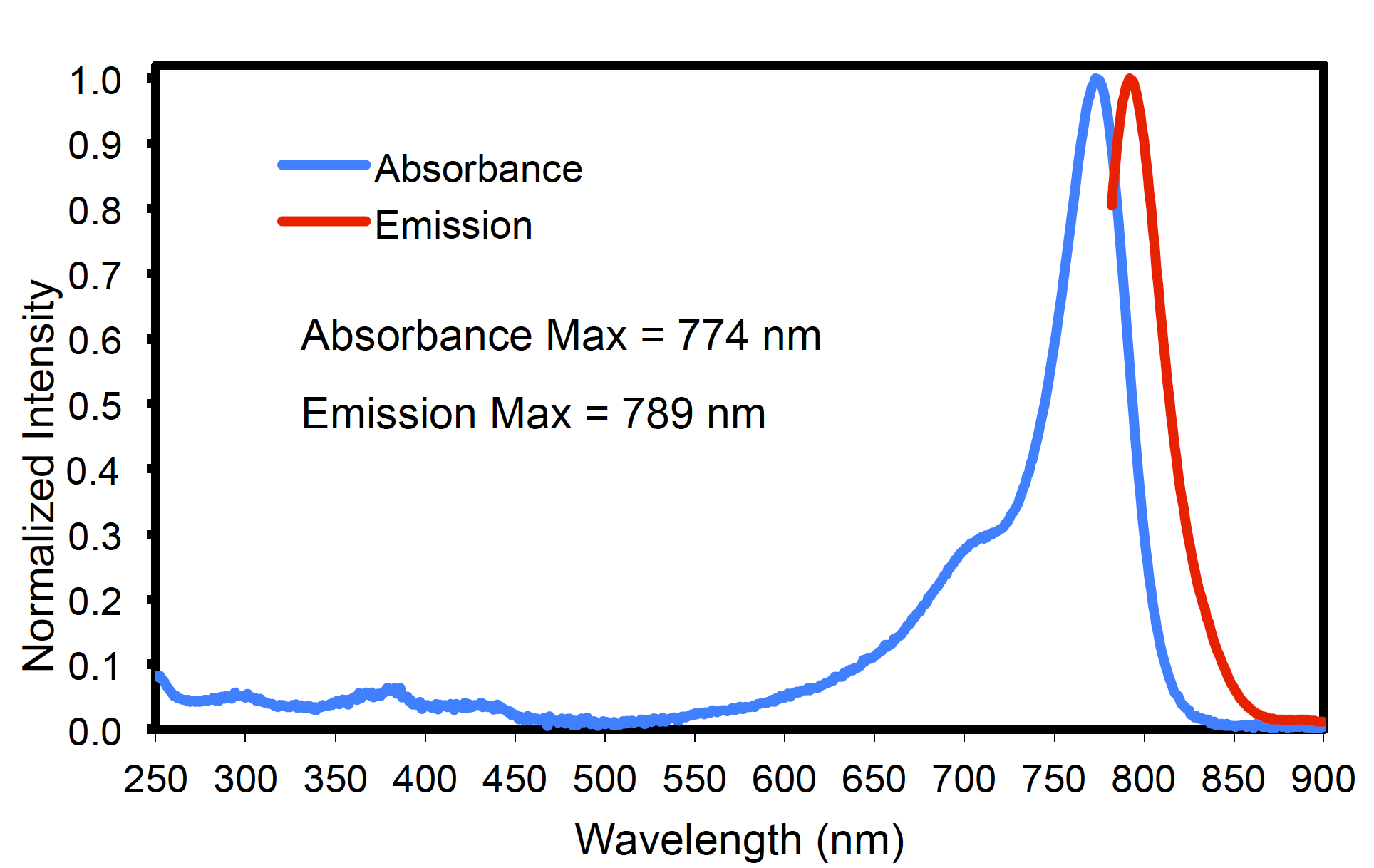IRDye® 800CW Carboxylate Near-Infrared Dye
Components
P/N | Description |
929-08972 | 100 nmol |
929-09406 | 5 mg |
929-70122 | 50 mg |
929-70123 | 100 mg |
929-70124 | 250 mg |
929-70125 | 500 mg |
929-70126 | 1 g |
Product Description
Development and use of optical imaging agents that contain IRDye 800CW coupled to other molecules may require a control for potential effects or retention of the dye. The carboxylate form of IRDye 800CW is the ideal control, as it is in a non-reactive state. It can be used as a control for both in vitro cell-based assays and in vivo animal imaging when IRDye 800CW is used as the detection agent. IRDye 800CW carboxylate can also be used as a reference control for evaluation of NHS ester labeling reactions by techniques such as HPLC.
The carboxylate dye has no reactive group and cannot be used to label other molecules.
Specifications
Physical state: Lyophilized pellet
Shelf Life: 1 year from date of purchase in the lyophilized state; 30 days after reconstitution.
Storage: Store lyophilized dye at -20 °C. Upon reconstitution, store at 4 °C and use within 30 days.
Protect from light when not in use.
- Molecular weight: 1091.1 g/mol
Correction factor at 260 - 280 nm: 3%
Absorption and Emission Spectra
| Solvent | Absorbance Maxima (nm) | Emission Maxima (nm) |
| Methanol | 778 | 794 |
| 1X PBS | 774 | 789 |
| 1:1 1X PBS:Methanol | 791 |
Molar Absorptivity
| Solvent | Molar Absorptivity (L mol-1 cm-1) |
| Methanol | 300,000 |
| PBS | 240,000 |
| 1:1 1X PBS:Methanol | 270,000 |
Absorption and Emission Spectra in 1X PBS

Protocol
The following are general guidelines for using IRDye 800CW Carboxylate.
Cell-Based Assays
Dye-labeled targeting agents can be used in cell-based assays to evaluate binding of the labeled compound. This technique is especially useful for testing and validation of optical agents that are ultimately intended for in vivo administration. IRDye 800CW carboxylate can be used to evaluate binding or other effects of the dye in the absence of the targeting moiety.
For use of IRDye 800CW carboxylate as a control for in vitro assays, use a molar concentration or quantity of carboxylate dye equal to the amount of dye contained in the desired dose of the IRDye 800CW labeled compound (taking into account the molar concentration and degree of labeling of the compound).
Reconstitute in sterile 1X PBS.
In Vivo Imaging
When administering an optical agent in vivo, it is important to understand the behavior and clearance of the dye-labeled imaging agent and the dye in the absence of the targeting moiety. IRDye 800CW carboxylate is the appropriate control for determining two important imaging parameters: the timing of dye clearance from the animal body; and specific organs or locations in the body where the dye may be retained for a longer period (for example, the liver or kidneys). This information allows the researcher to more accurately interpret the results of imaging experiments.
For control injections of IRDye 800CW carboxylate, administer a molar concentration or quantity of carboxylate dye equal to the amount of dye contained in the desired dose of the IRDye 800CW labeled optical imaging agent (taking into account the molar concentration and degree of labeling of the optical agent).
Reconstitute in sterile 1X PBS. It is recommended to filter-sterilize the solution through a 0.2 µm filter before administration.
Clearance Kinetics of IRDye 800CW Carboxylate

A single nude mouse was injected with 1 nmol (intravenous) of non-reactive IRDye 800CW dye, and clearance monitored over time as indicated. IRDye 800CW carboxylate dispersed rapidly and significantly cleared the animal at 24 h.
References
Kovar, J. L., Volcheck, W. M., Chen, J., and Simpson, M. A. (2007) Purification method directly influences effectiveness of an epidermal growth factor-coupled targeting agent for noninvasive tumor detection in mice. Anal. Biochem. 361:47-54.